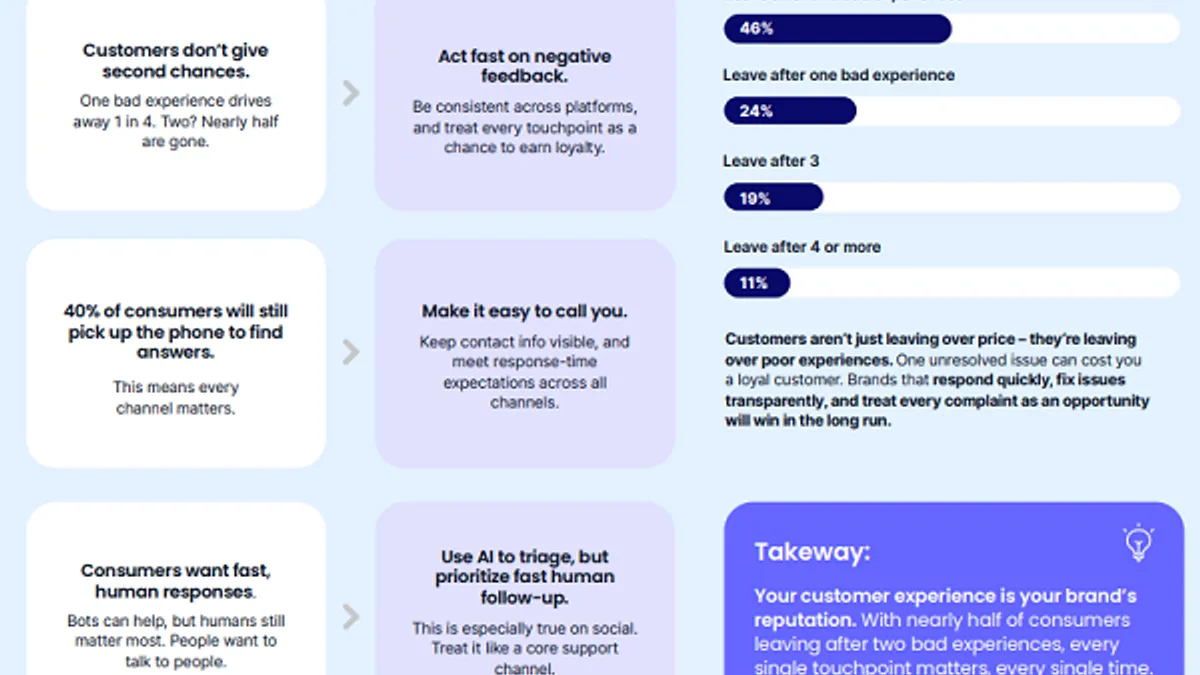The following is a guest post from Mike Herrick, SVP of technology at Airship. Opinions are the author's own.
There's been a lot of negative chatter recently around people having no clue what marketers do with their data. The current atmosphere of consumer mistrust is amplified by high-profile data leaks, a series of regulatory changes and greater scrutiny on the broad data industry. Indeed, these developments have left brands in a paradox.
Consumers demand personalized experiences but are increasingly wary of giving up control of their data. Brands, in turn, must leverage data to provide great experiences, though doing so risks consumer trust. If brands don't capture and leverage this customer data, they will fail to meet consumer expectations, lose customers and fail to grow. Without data, it's literally impossible. And the costs are high.
Companies with superior customer experience (CX) grow revenues as much as five times faster on average than their competitors with inferior CX, according to Forrester Research. While every industry sees positive impact from CX improvements, Forrester discovered three patterns of CX ROI for 18 industries, outlined below.
Not only is growth at stake, but businesses must avoid public backlash and maintain consumer trust by respecting the data exchange and committing to ethical data practices. These ideas may require a shift in how many brands collect and use data. To maintain customer trust while maximizing engagement, we believe brands should follow the below three principles.
Principle 1: Remember you don't need it all
Marketers have long aimed to achieve the Holy Grail of one-to-one marketing with personalization, and it's been believed that you cannot use too much data. In fact, you can use too much data. Marketers must understand that not all data needs to be collected and not all the data collected must be used for a marketing campaign.
First, according to Gartner, consumers view brands' efforts to personalize messages in order to:
-
"Prove you know me." The brand includes some personally identifiable information to demonstrate to the consumer it knows who they are, their purchase or browsing history and personal preferences.
-
"Help me." The brand makes it easier for consumers to complete a task or complete a purchase.
While both forms of personalization are valid when viewed independently, only one of these two categories is valuable to consumers. It turns out people see more value in personalization that focuses on helping them through the purchase.
Principle 2: Focus on relevancy
What shouldn't personalization look like? Many consumers have signed up for a retailer that sends them multiple emails a day. And actually, they all might be somewhat targeted based on past purchases. Still, there's no way the recipient will be interested in all the offers, causing them to become overloaded and potentially less engaged with the brand.
Instead, we believe brands should use first-party data to focus more on intent, layering location, affinity and purchase data together to send only the most relevant offers. The same Gartner report states, "we asked consumers about their likely actions if they receive a brand communication perceived to be personalized but irrelevant. Forty-eight percent of consumers said they will unsubscribe from future communications with the brand, while 14% said they would stop doing business with the brand altogether."
Amazon's birthday reminder skill is an excellent example of the power of explicit first-party data, as it enables Alexa users to verbally input all their friends' and family's birthdays so they don't forget gift-giving opportunities. This feature runs on data that the customer knowingly hands Amazon, therefore the data is inherently transparent and should strengthen the relationship between the e-commerce titan and customers.
Another important part of being relevant lies in messaging through the right channel. Whether you are a retailer, CPG or publisher, give your audience an easy-to-use preference center that lets them dictate what kinds of messages they want to receive and how they want to receive them. For the latter point, some people prefer text/SMS over email while others want to get different kinds of messages in different channels — shipping notifications via text versus new offers via email, for example. Others prefer to receive SMS only during weekends or only for big sales, with emoji content netting greater results. Relevancy means getting that granular.
Principle 3: Be transparent
Brands should prioritize transparency and reveal what data they are collecting, from where and how it will be used. They should be clear about not just their privacy policies but also their privacy practices while stressing that first-party data will never be shared without their consent.
With GDPR and the California Consumer Privacy Act in play, being transparent will not only engender consumer trust but also keep your brand out of legal hot water. It's going to be incredibly important for all marketers to enforce best practices across their departments.
So what's an example of doing data correctly? A colleague recently told me about her great experience with Beis Travel. She first put an item in the baggage brand's shopping cart before abandoning based on price. But she had given the website consent to use her smartphone number for messages during a past purchase. An hour after abandoning the shopping cart, Beis sent this twenty-something a discount code that gave her exactly what she was looking for: a better price. The SMS message also included a link to her shopping cart, where the promo code auto-loaded. Then, she completed the purchase.
Beis did three things right with its data personalization. It identified that the customer wanted to buy the item because she put it in her shopping cart; it nudged her with the right offer; and it chose the channel, SMS, that so many millennials like the customer prefer.
That's how you build customer trust with data instead of losing it. You don't do it by using a thousand data points at once — you do it by using the few right ones. Follow a principled approach to data personalization, and you can perform at such a high level, too.






















